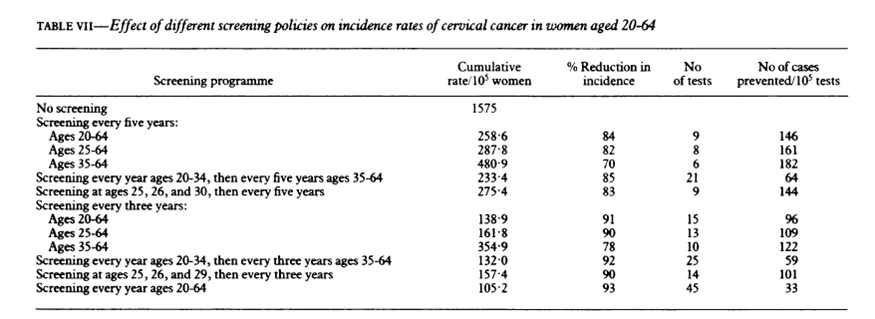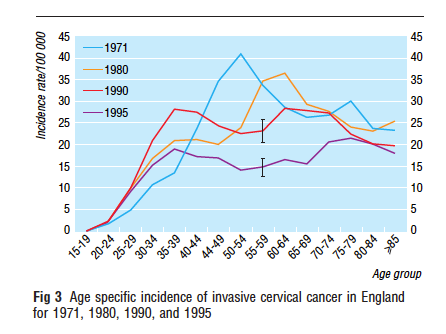This content is also available in:
Italiano
Português
Deutsch
Čeština
Română
Türkçe
The International Agency for Research in Cancer (1986) reported a summary of the effectiveness, in terms of reduction of risk of invasive cancer, of screening at difference intervals in different age groups (Figure 6.5; IARC 1986).
This international study provided evidence that 3-yearly screening, from 20 or 25 to 64 years of age, produced the greatest protection (>90%) against invasive cervical cancer,

National audits in several countries provide evidence that adhering to recommended screening intervals reduces the risk of invasive cancer. For example, Andrae et al. (2008) conclude in their national audit in Sweden, “Nonadherence to screening intervals was the main reason for cervical cancer morbidity.
Risk of disease in different birth cohorts
Changes that have occurred since population screening started
- An increase in mortality and incidence was recorded in women who were in their early 20s during World War II explaining a natural fall in women born in the 1930s compared with the 1920s before the effect of screening would be evident (Quinn 1999).
- A substantial increase in incidence was seen in women born since 1950 in England during the 1980s, which was reversed in all age groups eligible for screening during the following decade (Figure 6.6; Quinn et al. 1999).
- Rates of deaths, cases of invasive and in situ carcinoma all increased in young women in England, suggesting an increased risk of disease – almost certainly due to the increased prevalence of high-risk HPV related to the availability of reliable contraception (Peto et al. 2004).
- An increase cervical cancer incidence in women aged 25-29 years was recorded in Finland, Norway and Sweden although the numbers were small (Lååra et al. 1987).


